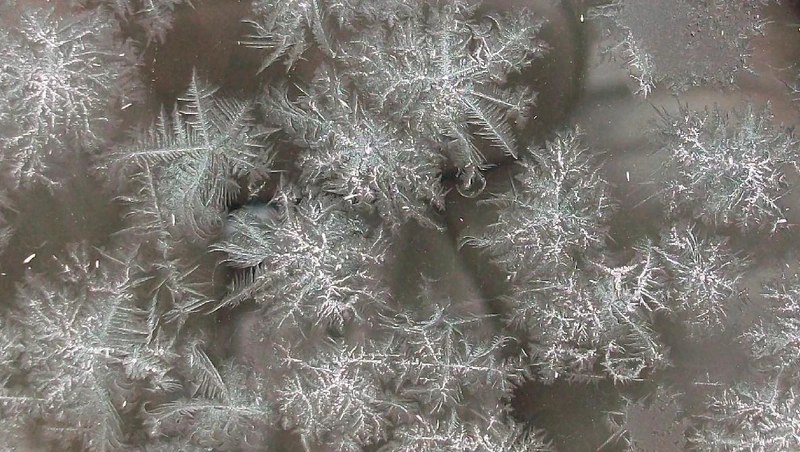Chapter 2: Thinking Organic
“The bigger we got, the colder we became” – Steven Adler, Guns ’n roses
We have thus quickly drawn a sort of timeline: Fordism, Toyotism, and therefore Lean, then Agile. Each responding to the constraints and expectations of its era. What are the characteristics of the era opening up to us?
Undeniably the complexity of recent years is part of its characteristics. This complexity is moreover expanding, propagated by the acceleration of discoveries, and especially means of communication, and the globalization it has generated say some.
These means of communication are probably the second characteristic of our times: instantaneity, global village, immaterial: relationships and wealth are changing.
Third point and not the least: old wealth is declining: not only because they are dwindling, but because they are disappearing. We have worn them out along with our planet. Without falling into demagogy it seems essential to understand that we will have to optimize, economize, our resources, of all types. We are entering an era of frugality.
Complexity, immateriality, resource savings: that’s the framework of our new organizations.
I defend an old, fairly common idea: our organizations must not be thought of as a rational Cartesian assembly, but as an organic, moving whole. It’s neither original nor new. It’s the organic and complex approach defended by many for years. However, if the idea isn’t new, the situation has become so. We are there: this moment when the concept has become reality, we need to (re)think our organizations according to this idea. I hope to explain to you what a living organization is and how to transform our organizations to move towards these new organizations.
An organic organization?
But first what is an organization?
Organization designates the action, but also the result of the action of the one who delimits, structures, arranges, distributes, articulates1.
It translates, at the level of means, the expression of a will by:
-
The way different elements of a complex set, a society, a living being are structured and articulated; or
-
A hierarchy and/or a concrete arrangement of organs or means required.
Structure
A non-Cartesian thought pattern
Thus, it’s too easy to think of our organizations only as simple, clear geometric structures, implying rectilinear, square. It’s an ease of mind, a denial of reality. Naturally for the management in place, the direction, the hierarchy, the decision-makers, at least those who persist in this simplistic vision it’s comfort. We describe our organizations like the drawing on the right, well ordered, nobody is fooled, it’s a denial of reality.

Fir tree - Image twitter, @organizedthings
The neatly arranged fir tree in the right box is quite simply dead, therefore inert, it no longer produces anything. Raise your head in the stars, here’s a large-scale organization! There too useless to look for any organization chart or diagram that could correspond to one of our organizations. What is well arranged, on the right in the drawing, is science fiction.
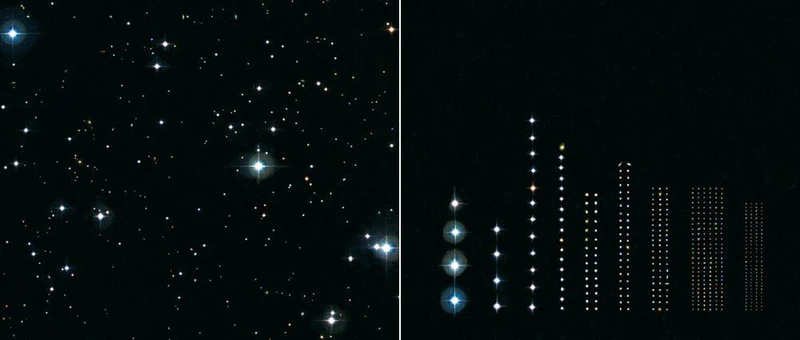
Space - Image twitter, @organizedthings
Don’t look for life, evolution, in static, inert elements. Even with us, humans, all life and de facto all organization don’t bother with comfortable patterns based on rectilinear tracings. In the right box, this child seems quite unhappy.
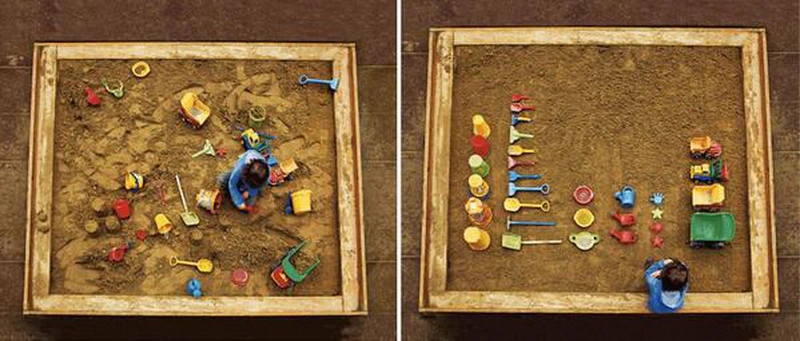
Child - Image twitter, @organizedthings
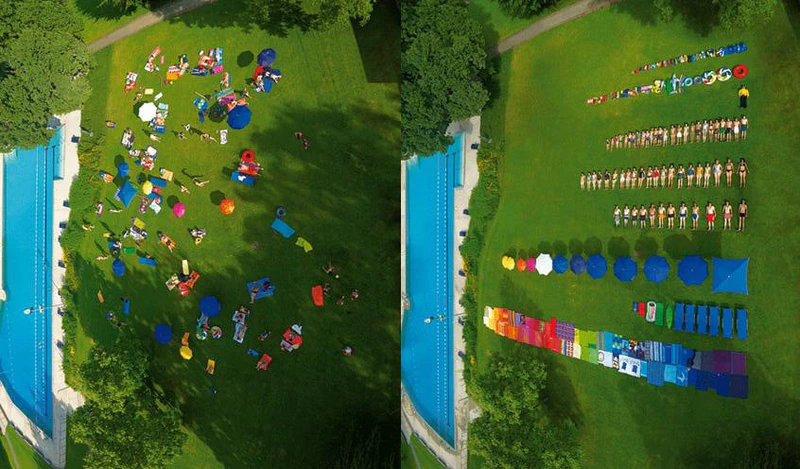
Pool - Image twitter, @organizedthings
To approach our organizations as machines, it’s madness that awaits us.
We shouldn’t approach our organizations with a classic structure, with an organization chart to support it, but with a thought pattern. But if this pattern isn’t based on our Cartesian drifts, what can it be based on?
The motifs we take as reference are manifestly not the right ones. But where to find the right patterns? Simply by opening our eyes and observing what works around us, in nature, as we just did on some of the previous images (space, the fir tree, for example).
If nature, the organic, because it responds to the current complex world, must again serve as our example, where to look? Nature itself teaches us there’s no solution, at least no good solution, it teaches us adaptation. And, it proposes very different things, at the antipodes of each other.
Let’s look at two extremes to evoke metaphors for living organizations: on one side the crystal, probably one of the most organized elements (for the Cartesian mind that inhabits us), and on the other the termite mound which holds some surprises.
The crystal
We mention the crystal as an organized natural structure, because its characteristic is to be periodic, that is to say it builds on the same combination that it repeats, periodically2. We find there an old ambition of our organizations: to reproduce the same pattern, almost infinitely, to grow, expand, and facilitate its management (reproduction of the same gestures).
In fact, the crystal is used as an efficient energy conductor, because the periodicity of its structure causes substantial economy. By encountering the same patterns, we save an energy cost of communication that avoids constant adaptation. Nature, in the crystal, teaches us that by repeating identical structures we save or optimize the energy cost of communication.
Beyond this periodicity that makes it so Cartesian, the crystal remains a complex element, not predictable in its form.
“Crystallization is the passage from a disordered liquid, gaseous or solid state to an ordered solid state, controlled by complex laws. The fabrication of a crystal takes place under the control of different factors such as temperature, pressure, evaporation time”. – Geowiki3
The crystal is lazy
“To better understand the reason for the form of a crystal, we must not ignore that nature is lazy and that when given the choice and time, it always chooses solutions that cost it the least energy. Thus, the form of a crystal testifies to the physical conditions that prevailed during its growth, because it’s the form that cost the least energy”. – Geowiki
Thus if the crystal repeats a structure infinitely, this structure is defined by its context. It’s not a predetermined form. Laziness is a boon, there too, in terms of energy cost. Nature, in the crystal, teaches us that the structure will take the most economical form in energy terms. Frugality is key.
Crystal stability
“After this reasoning sketch, it should be known that things are not always so simple. A crystalline face is also a discontinuity, a surface where atoms are not chemically bound like the atoms of the mineral’s core. This amounts in some way to breaking bonds (the approximation is a bit brutal, but correct). Now in the growth medium, soluble species are capable of absorbing on the surface by weakly binding with surface atoms. We can stabilize planes that normally cost very dearly, and destabilize others that are normally easy to pay. Thus we modify the final form of the crystal this time without modifying the physical conditions. These stabilization phenomena can thus induce crystalline morphologies that shouldn’t normally be observed. When chemical species absorb on the surface and therefore stabilize the presented planes, these surfaces are less accessible to continue growth following these planes. Thus it’s the least stable planes, those that have few, even no, molecules on the surface, that grow the fastest. As these planes are unstable, they will eventually no longer be represented during growth, favoring thus the slow growth of the most stable planes”. – Geowiki4
If we continue our analogy, we’ll be surprised by the ease of stabilizing certain parts of the organization, and conversely destabilizing some –though thought stable– unexpectedly. Scaling is easier with elements that haven’t yet been stabilized in the organization. The dynamics of scaling necessarily slows down when all parts are stabilized. Should we almost encourage destabilization at times?5 Nature, in the crystal, teaches us that what is stabilized requires a stronger energy cost to be changed, and therefore that it’s the non-stable parts that will evolve fastest, and most likely.
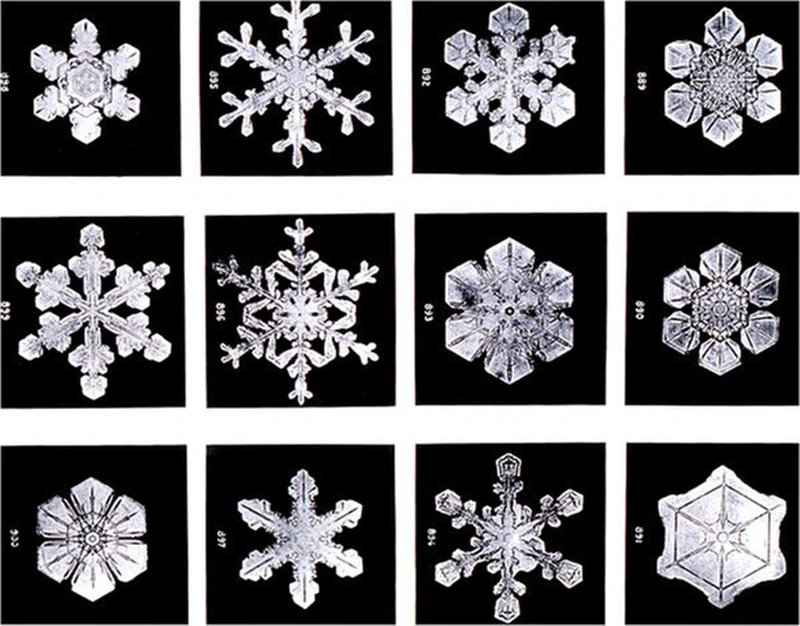
Crystal truncation
Truncation is one of the sources of crystal modification.
“A truncation is the replacement of a vertex or edge of a crystal by a face”. – Geowiki6
“One of the causes modifying the initial form of crystals is truncation”. – Geowiki7
Is this a metaphor indicating that it’s by changing the head, the top, that the organization will take a new form? Should we see there the idea that it’s by giving back a power of self-organization to each group, by removing the head, that we allow it to organize itself, in a complex way, to crystallize best with the rest of the company’s parts?
Dependency management: twins?
“According to the position of crystals we distinguish twins by juxtaposition and twins by penetration (or interpenetration - more or less complete). We speak of simple twins when two crystals are associated, and multiple twins when more than two sub-individuals compose the twin, we sometimes arrive, by multiplication of the sub-individuals involved, at cyclic twins, whereas when twin formation repeats inside a group, we obtain polysynthetic (repeated) twins”. – Geowiki8

If we amuse ourselves by pushing the analogy far, twins would be these masses of associated teams…The vocabulary used by crystal science furiously recalls the situations experienced.
Crystal teachings
By reproducing the same pattern, we reduce the energy cost of communication. But this pattern is determined by context, and especially by its cost: it’s the pattern that costs the least energy that is favored by nature. Evolutions and improvements of the crystal structure are simpler in the unfinished parts, still disordered.
The analogy with our organizations seems clear and realistic.
The termite mound
On the other side of the Cartesian crystal, of our imagination about nature’s forms, let’s observe the termite mound. Why at the other end? Because if the crystal could seem naturally organized (all these beautiful structures, these fractal approaches), the termite mound seems completely empirical. And it is: its construction begins…randomly. But as nature does things well, termite mounds are the largest constructions that are not human. The crystal is a material, the termite mound is a construction. Putting them on the same scale is perhaps daring.
See the termite mound as a very interesting construction. One of the most interesting if we observe it with J.Scott Turner’s reflection in mind:
“I wish to explore an idea: that the edifices constructed by animals are properly externalized parts of their physiology”. “A termite mound is like a living organism, dynamic and constantly maintained”9.
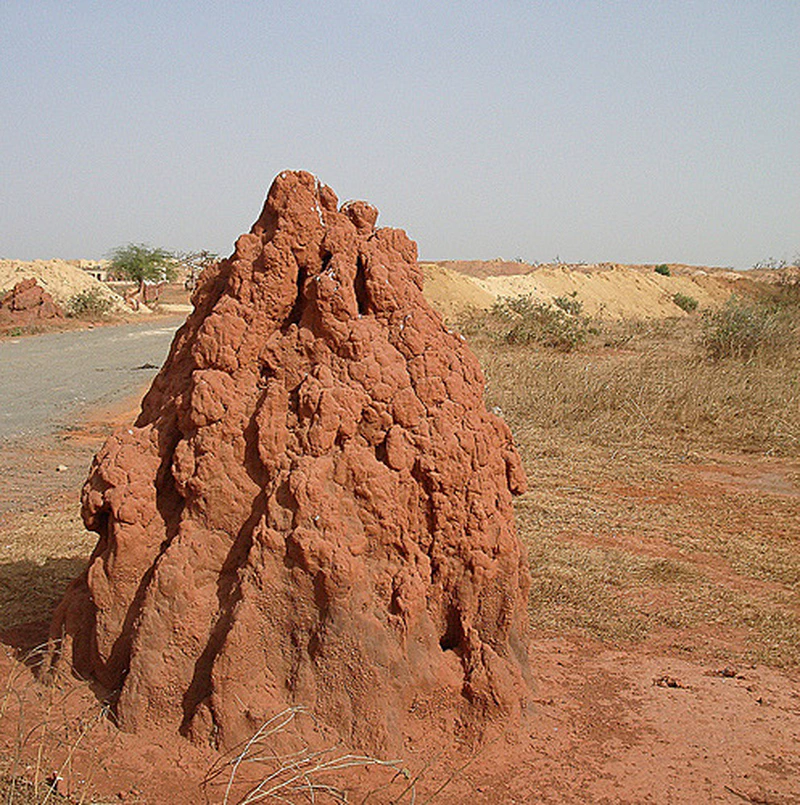
For what purpose do termites make these physiological extensions that are their termite mounds? Always for energy questions, to save energy, store energy, outsource energy effort.
Can we make an analogy with our organizations? Probably. What would the mentioned energies be? First obviously the value created by the organization, first energy flow. But also the optimization of incoming energies: those of its collaborators (involvement, engagement), those of the raw material it uses (electricity, etc.). An incoming energy, an outgoing value. We only talk about flows, transformation.
Opportunity makes the thief
Just as the crystal was lazy, the termite mound is born from an opportunity. Opportunity makes the thief. Termites make piles, and when an opportunity presents itself to build the termite mound (piles that can be assembled), it’s the termite mound that is built. Nature, there too with the termite mound, teaches us that form and structure aim for energy optimization (here it’s about temperature).
-
Conversations with my brother, researcher, crystal specialist ↩︎
-
In the comments Nicolas Delahaye indicates that to further deepen this approach: Nudge marketing: How to effectively change behaviors by Eric Singler and Makestorming: The corporate hacking guide by Marie-Noéline Viguié, Stéphanie Bacquere. ↩︎
-
J.Scott Turner, The extended organism, “I actually wish to explore an idea: that the edifices constructed by animals are properly external organs of physiology.” ↩︎
